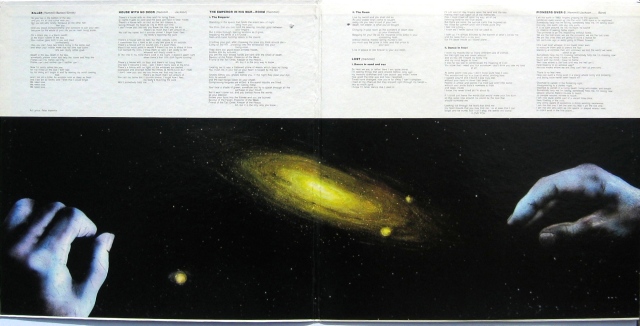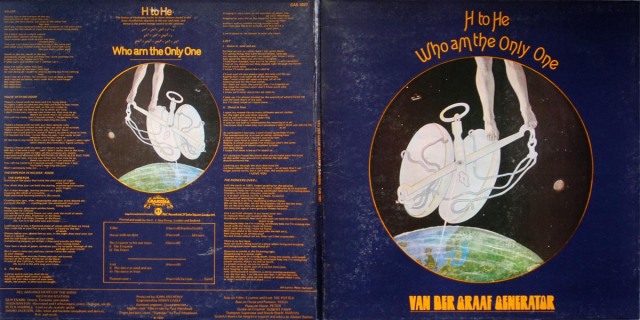I
The High School I attended was pretty large for the south-eastern suburbs of Melbourne. The area had been a ‘growth corridor’ for some years and its previous life as a market garden area must have lingered in air and soil as children were plentiful. There were five classes of 25 wide-eyed primary school graduates when I started; we were grouped into ‘Grades’ designated A to E. This worried me as I was in the ‘E’ group and I was justifiably anxious that my Father might view it as a reflection of my academic competence.
His concerns were groundless; I was a straight down the line, homework submitting, top-button-done-up, straight-tie goody-goody who—apart from sneaking out of the grounds for a cigarette at lunch-time—stayed yawningly within the confines of expected behaviour.
By the time our class became 3E we’d been more-or-less intact for two complete years and knew the pecking order and classroom roles. But Eric, a stocky lad with close-cropped fair hair and a blazer always buttoned, was something of an enigma. He radiated a detached confidence somewhat at odds with his average classroom performance and seemed serenely unbothered by having few friends.
Near the end of lunchtime as a smoking pal and I loitered outside the back gate of the school we would sometimes see Eric walking briskly back into the grounds, his gait unbalanced by the heavy school bag over his shoulder. It was puzzling: how come he’s carrying his bag at lunchtime? Maybe he’d been home for lunch. That wasn’t uncommon; these were days when leaving the grounds was commonplace, whether the destination was the nearby Milk Bar (a non-corporate convenience store of the local variety) or the home of a friend. I never gave it much thought, being too busy enjoying the illicit cigarette and watching out for prowling authority figures.
Yet some curiosity must have lingered, for one day I asked Eric about his lunchtime excursions. His eyes were wary. Then he grinned.
“I break into houses.”
My blank look must have been comical because his grin broadened markedly.
“Transistors and radios mostly.”
Eric bent down and unzipped his school bag. Inside lurked a transistor in its protective leather cover of shiny shiny leather and a sleek mantle radio in orange plastic. Frankly, I was speechless and the conversation failed due to my non-participation.
It would be fair to say that I viewed Eric a little differently after that. More warily, probably. This was a considerable distance beyond slouching just outside the grounds having a puff.
No wariness was in evidence when our Art teacher acceded to Eric’s request to bring in his Van Der Graaf generator for a class demonstration. Later I wondered why he had approached Miss Fitzgibbon rather than the Science teacher, Mr Benson. The conclusion was obvious. Miss Fitzgibbon was new and young and said “Yes”, whereas Mr Benson was seasoned and burly and would have snapped “You must be joking”.
So Eric set up his hand-cranked Van Der Graaf generator on a bench in the Art room, the large metal globe and its satellite moon looking very Science Fiction to the intrigued audience. It was easy to believe the grinning Eric was involved in secret and despicable experiments as he turned the handle then slowly moved the smaller sphere closer and closer to the Earth until, with a satisfying “Crack!”, a large blue spark leapt across interstellar space (about 10 cm in this instance).

Courtesy of http://www.nuffieldfoundation.org
We Ooh-ed and Ah-ed appreciatively. Eric asked politely if he could show us one more experiment.
Grinning, he produced a metal knitting needle inserted into a small block of wood which he carefully placed between the two spheres. On the tip of the needle he gently placed a small teased-out piece of steel wool. After giving the generator a firm crank, he slowly moved the little sphere closer. Closer. There was a crack and a burst of light that lingered briefly as the steel wool was incinerated in a blue-green-yellow flash. We stared transfixed as blackened metal dandruff drifted down to the bench.
The teacher cleared her throat and we all breathed.
“I think that’s enough Science for now,” she said.
II
Released late in 1970, H To He Who am the Only One was Van Der Graaf Generator’s third album.
The English band set out their wares in opening song “Killer” which bursts forth with thunder rage and lightning, the surges pierced by squalls of saxophone. It also rocks like a bastard, carrying Peter Hammill’s strident vocal.
On a black day in a black month
At the black bottom of the sea
Your mother gave birth to you
And died immediately
The theme of isolation – a recurring one in Hammill’s lyrics – continues in “House with no door” though here the alienation seeps through a curtain of sadness. David Jackson’s doubled flute provides a plaintive interlude.
You call my name but it sounds unreal
I forget how I feel
The reedy organ accompaniment by Hugh Banton adds to the sense of lonely lamentation.
In “The Emperor in his War Room” Hammill turns his critical gaze on power and conflict. This piece – with flute, organ and a lovely guitar part from guest Robert Fripp – is a fine example of early English progressive music. The structural and sonic connections with King Crimson are clear, though always just that bit more unsettling, that step further out.
The second side has just two pieces. “Lost” is a two part lament for a relationship that failed. Nowadays I find this particular lyric uncomfortably like some of the angst-ridden poetry squeezed out by a tragic young Vinyl Connection… just a lot better written.
Final track “Pioneers over C” is a classic, slightly unnerving piece of VDGG resistance. Either about a futuristic voyage of interstellar exploration that is doomed before it starts or another metaphor for being lost in inner space, it moves between keening misery and declamatory bombast with disconcerting ease. Guy Evans percussion drives, stumbles, quests but always supports the journey.
With so many VDGG songs the music somehow amplifies the existential tossing and turning of the lyrics while the angry yearning of the singer permeates and unsettles the music. It’s a clever trick if you can pull it off and VDGG do it more successfully than most. It’s no surprise that several ‘punk’ musicians openly admired Peter Hammill and Van Der Graaf Generator. Their early music has not mellowed with age but offers great rewards for those willing to diverge from the mainstream comfort zone.
III
I wonder what happened to Eric.





I have no doubt Eric is a police chief somewhere. I’ve never heard any VDGG, I’ve never quite dared to. I imagine them being very skronky and impossibly dense.
LikeLike
Well, the song above (“Killer”) is a pretty good indication of what early VDGG is like, so perhaps when you’re feeling brave…
LikeLike
I don’t recall VDGG although the clip does sound vaguely familiar – the era I suppose.
As to Eric, perhaps he, like Benny from Brighton, enjoyed a stint at her majesty’s…
Benny devised an initially successful plan to skim parking meter money from the takings when the coin-collection-task was privatized (during the Kennett era). Mind you, Benny was a very good companion at the golf course opposite our school where we enjoyed smoking privileges. Oddly, only three of us ever sought these non-player, non-member benefits.
LikeLike
Ah, the mysteries and miscreants of youth!
Although dense and often unsettling – I could not avoid that re-using that word – I reckon VDGG, though of their time, were/are unique.
LikeLike
I love it that you were a buttoned up goody-goody that was secretly sneaking off campus at lunch to light up a smoke. Ha ha! Ah, youth…
LikeLike
Interesting you mentioned the King Crimson parallels – when Killer burst in, I was transported to the opening of 21st century schizoid man, and that’s far from a bad comparison!
LikeLike
An apt connection. Generally less pastoral prettiness in VDGG than KC (Lizard, Moonchild, etc) and more existential themes in the lyrics. Glad you heard something you appreciated.
LikeLike
And Robert Fripp is someone I seem to appreciate more & more as the years go on!
LikeLike
Interesting and hopefully rewarding!
I sometimes think that the way to grow into progressive music is simply to listen to lots and lots of different artists and strive for open ears.
It doesn’t mean rejecting other styles – it IS possible to enjoy Ramones and Crimson.
LikeLiked by 1 person
I’m currently preparing a Van Halen review where I’m arguing that same point – on Fresh Prince, Uncle Phil said it’s possible to like classical music & James Brown, I was going to say something like Vivaldi & Van Halen, Ramones & Crimson also fits!
LikeLike